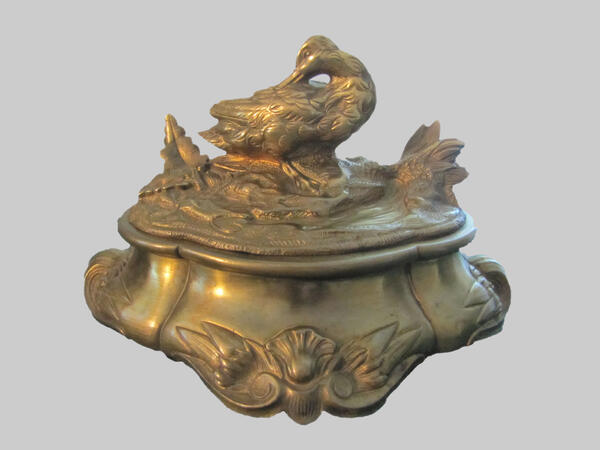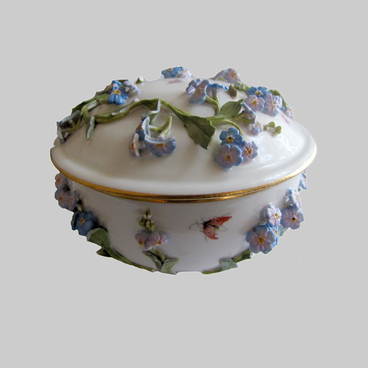Georgy Chicherin was an inquisitive child who preferred reading and foreign languages. For the boy, going to school seemed like a ‘mysterious life.’
Years later, he wrote that he remembered himself as a child, ‘alone in a large manor house in Tambov, sitting by the window and looking at the students going to class and then returning. And my whole soul was striving there.’
All the time that Georgy Chicherin spent in the city, the inkwell stood on the table in his room. However, researchers found the artifact only in 1984 in the attic, when the restoration of the building began.
The 19th century craftsmen made a bronze stationery accessory. There are 2 compartments for liquid ink under the lid with a duck. Despite the fact that the vessel was created for children’s use, craftsmen provided it with a stable base that prevented falling and kept the workplace clean.
At the age of 10, Georgy Chicherin entered the men’s gymnasium - a secondary educational institution of the Russian Empire, which was the oldest in the Tambov province.
In pre-revolutionary sources, experts found the following description of the territory acquired by Boris Khvoschinsky, a local nobleman, for an educational institution: ‘The house is two-storey, with the two-storey wing, under which exits are made; all service buildings, sheds, stone stables are covered with iron; a wooden bathhouse covered with planks; under the estate there are 5 proportions, divided into 2 yards and a vegetable garden; on both sides of this house there is a square, on the third side - a street, on the fourth - a house of public officials… There was a post office in the house of Khvoshchinsky in 1827 <…>. It was only in November 1827 that the gymnasium finally settled in a new room, which had been previously repairs, namely: “The floors are all painted, the doors of clean carpentry are lacquered with the best copper locks and latches, the walls in one room are decorated with marble, and in others painted by painter Pavel Lemberh, who also painted some rooms for sculpturing with the images of various fittings and other decorations decent for an educational institution, and in part decorated them with picturesque flowers, “for which he received gratitude.”
Years later, he wrote that he remembered himself as a child, ‘alone in a large manor house in Tambov, sitting by the window and looking at the students going to class and then returning. And my whole soul was striving there.’
All the time that Georgy Chicherin spent in the city, the inkwell stood on the table in his room. However, researchers found the artifact only in 1984 in the attic, when the restoration of the building began.
The 19th century craftsmen made a bronze stationery accessory. There are 2 compartments for liquid ink under the lid with a duck. Despite the fact that the vessel was created for children’s use, craftsmen provided it with a stable base that prevented falling and kept the workplace clean.
At the age of 10, Georgy Chicherin entered the men’s gymnasium - a secondary educational institution of the Russian Empire, which was the oldest in the Tambov province.
In pre-revolutionary sources, experts found the following description of the territory acquired by Boris Khvoschinsky, a local nobleman, for an educational institution: ‘The house is two-storey, with the two-storey wing, under which exits are made; all service buildings, sheds, stone stables are covered with iron; a wooden bathhouse covered with planks; under the estate there are 5 proportions, divided into 2 yards and a vegetable garden; on both sides of this house there is a square, on the third side - a street, on the fourth - a house of public officials… There was a post office in the house of Khvoshchinsky in 1827 <…>. It was only in November 1827 that the gymnasium finally settled in a new room, which had been previously repairs, namely: “The floors are all painted, the doors of clean carpentry are lacquered with the best copper locks and latches, the walls in one room are decorated with marble, and in others painted by painter Pavel Lemberh, who also painted some rooms for sculpturing with the images of various fittings and other decorations decent for an educational institution, and in part decorated them with picturesque flowers, “for which he received gratitude.”



